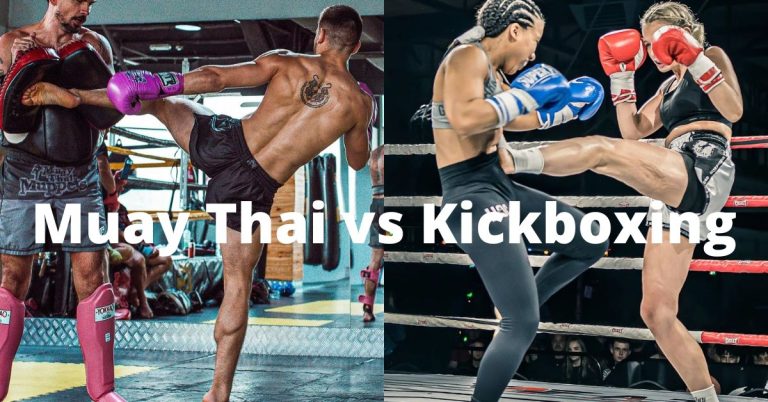Kickboxing vs. Wrestling: Which Martial Art Reigns Supreme?
Introduction
When it comes to combat sports, kickboxing and wrestling have gained significant popularity around the world. Both martial arts require immense skill, technique, and physical prowess. However, they differ in various aspects, including striking techniques, grappling, rules, and styles. In this article, we will delve into the world of kickboxing and wrestling, exploring their unique characteristics, benefits, and differences. Whether you’re a beginner looking to start your martial arts journey or a fan curious about the intricacies of these disciplines, read on to discover the nuances of kickboxing and wrestling.
1. Understanding Kickboxing
1.1 The Origins of Kickboxing
Kickboxing originated in Japan and gained popularity in the 1960s and 1970s. It combines elements of traditional martial arts, such as karate and muay thai, with Western boxing techniques. Kickboxing focuses on strikes using punches, kicks, knee strikes, and elbow strikes.
1.2 Rules and Techniques
In kickboxing, fighters use both their hands and legs to strike their opponents. The sport follows specific rules that govern the allowed techniques and target areas. Common techniques in kickboxing include jabs, hooks, roundhouse kicks, and low kicks. Fighters aim to score points by landing clean and effective strikes.
1.3 Training for Kickboxing
To excel in kickboxing, rigorous training is essential. Kickboxers undergo physical conditioning to improve their strength, speed, and endurance. Training sessions include bag work, pad drills, sparring, and strength training exercises. Practitioners also focus on flexibility and agility to enhance their kicking techniques.
1.4 Benefits of Kickboxing
Kickboxing offers several benefits to practitioners. It improves cardiovascular fitness, enhances coordination, and increases overall body strength. Regular kickboxing training helps with weight loss, stress reduction, and self-confidence. Additionally, kickboxing provides valuable self-defense skills that can be used in real-life situations.
2. Exploring Wrestling
2.1 A Brief History of Wrestling
Wrestling is one of the oldest combat sports, with roots dating back to ancient civilizations. It has evolved over time and is now practiced as both a competitive sport and a form of entertainment. Wrestling involves grappling techniques and focuses on gaining control over an opponent through takedowns and pinning maneuvers.
2.2 Rules and Techniques
Wrestling matches take place on a designated mat and follow specific rules. The objective is to gain points by executing takedowns, escapes, and reversals. Wrestlers employ various techniques, including single-leg and double-leg takedowns, throws, and holds to immobilize their opponents.
2.3 Training for Wrestling
Wrestlers undergo rigorous training to develop strength, agility, and flexibility. Conditioning exercises, such as running, weightlifting, and bodyweight drills, form a crucial part of their training regimen. Technique practice, live drilling, and simulated matches are also essential to improve skills and tactical understanding.
2.4 Benefits of Wrestling
Wrestling offers numerous benefits, both physically and mentally. It enhances overall strength, endurance, and body control. Wrestlers develop discipline, resilience, and mental toughness through their training and competitions. The sport also instills valuable self-defense skills and improves spatial awareness and balance.
3. Kickboxing vs. Wrestling: A Comparison
3.1 Striking vs. Grappling
One of the primary differences between kickboxing and wrestling is the focus on striking versus grappling techniques. Kickboxing emphasizes punches and kicks, while wrestling centers around takedowns and ground control. The choice between the two depends on individual preferences and desired skill sets.
3.2 Stand-Up vs. Ground Fighting
Kickboxing primarily takes place in a standing position, where fighters utilize their striking techniques. In contrast, wrestling involves ground fighting, with an emphasis on controlling and pinning opponents. Each discipline presents unique challenges and requires specific strategies and skill sets.
3.3 Self-Defense Applications
Both kickboxing and wrestling offer valuable self-defense skills. Kickboxing equips practitioners with striking techniques that can help fend off attackers. On the other hand, wrestling teaches effective takedowns, immobilization techniques, and ground control, which can be advantageous in real-life confrontations.
3.4 Physical Fitness and Conditioning
Kickboxing and wrestling provide excellent opportunities for physical fitness and conditioning. Kickboxing enhances cardiovascular endurance, strength, and flexibility. Wrestling develops explosive power, agility, and muscular endurance. Both disciplines offer challenging workouts that contribute to overall health and fitness.
3.5 Mental Discipline and Focus
Both kickboxing and wrestling require mental discipline and focus. Kickboxing demands quick reflexes, strategic thinking, and the ability to read opponents’ movements. Wrestling necessitates mental toughness, adaptability, and the ability to execute techniques under pressure. Practicing either sport can foster mental resilience and enhance concentration skills.
4. Choosing the Right Discipline for You
4.1 Personal Goals and Interests
When deciding between kickboxing and wrestling, consider your personal goals and interests. If you enjoy striking techniques and want to improve your self-defense skills, kickboxing may be the right choice. On the other hand, if you prefer grappling and ground control, wrestling could be a better fit.
4.2 Fitness Level and Physical Attributes
Consider your fitness level and physical attributes when choosing a combat sport. Kickboxing requires a good balance of speed, power, and agility, while wrestling relies on strength, endurance, and body control. Assessing your capabilities can help you determine which discipline aligns better with your natural abilities.
4.3 Availability of Training Facilities
Availability of training facilities and qualified instructors is an important factor to consider. Research local gyms or clubs that offer kickboxing and wrestling training. Visit the facilities, speak with coaches, and observe classes to assess the quality of instruction and the training environment.
4.4 Considering Combining Both Sports
Some individuals may choose to train in both kickboxing and wrestling to develop a well-rounded skill set. Combining the two disciplines can offer a balanced approach to combat sports, allowing you to utilize striking and grappling techniques effectively. Discuss with experienced trainers to create a training plan that suits your goals.
Conclusion
Kickboxing and wrestling are distinct combat sports with their own sets of techniques, training methods, and benefits. Kickboxing emphasizes strikes using punches, kicks, knees, and elbows, while wrestling focuses on takedowns and ground control. Each discipline offers unique advantages for self-defense, physical fitness, and mental discipline. By considering your goals, fitness level, and personal preferences, you can choose the discipline that suits you best. Whether it’s kickboxing, wrestling, or a combination of both, these combat sports provide exciting and challenging opportunities for personal growth and development.







